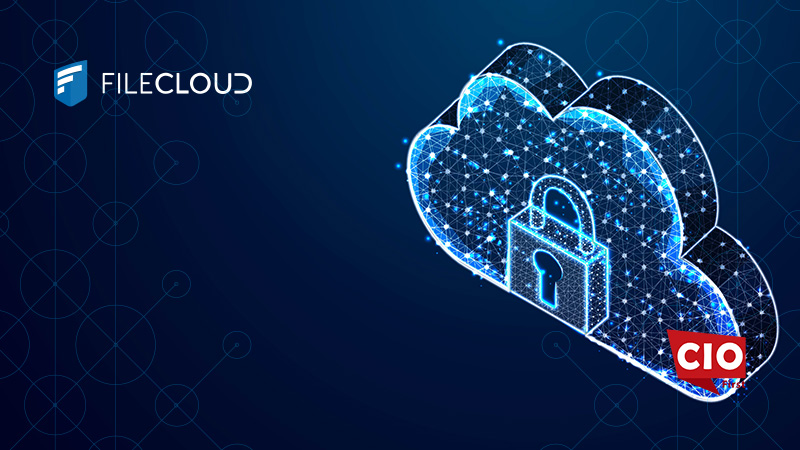FileCloud, a leader in content governance and collaboration for unstructured data, announced several new product advancements to help customers meet enterprise data protection requirements.
“FileCloud makes it simple for enterprise organizations to meet their content governance, privacy and compliance requirements, specifically when there are complex objectives in hybrid environments,” said Jason Dover, Chief Product Officer at FileCloud. “Our goal is to create solutions that enable customers to balance risk management with easy and frictionless content collaboration inside and outside their firewall boundaries. Our recent product enhancements are focused on doing just that, while also putting powerful new capabilities in the hands of CIOs to support organizational and IT objectives.”
Automated Content Classification
Data is the most valuable asset that organizations manufacture, which is why protecting it and ensuring it’s handled in a compliant way are among top priorities for CIOs. Classifying content that may reside across private cloud and public cloud boundaries can be a challenge. To assist, two key enhancements have been added to FileCloud’s content classification solution:
- Visual No-Code Editor:
The next generation of FileCloud’s smart content classification engine includes an intuitive, visual no-code editor as well as a simulation mode that allows classification rules to be tested against sample data before being rolled out to production.
Also Read: Copado Launches Copado Explorer to Simplify and Streamline Testing on Salesforce
These enhancements simplify the complex task of constructing and validating the rules against an environment and unique data sets which may extend beyond standard PII. Accurate classification and attachment of the appropriate metadata, in turn enables automated application of relevant policies and controls.
- AI-Powered Classifier:
Customers can now choose to enable FileCloud to leverage OpenAI as a classifier. Enterprises are increasingly experimenting with cloud-based large language models (LLMs) and testing the use of AI within their infrastructure.
This new functionality in FileCloud can bring automated organization and data management to content sets in conjunction with cloud services. Simple and accessible, natural language can be used to define how content should be classified and tagged when implemented. Support for additional large language models (LLMs), including models deployed in private clouds, will be extended over time.
Compliance Enablement
FileCloud’s Compliance Center provides configuration monitoring templates that compare content access and other key settings within the deployment against the articles of common compliance standards such as GDPR, HIPAA, and ITAR.
This compliance support tool has been extended to include templates for NIST 800-171 as well as the Saudi Arabia Personal Data Protection Law (PDPL). These extensions remove blockers for US Federal agencies and contractors that handle CUI (controlled unclassified information) as defined in Executive Order 13526, as well as organizations that process data associated with individuals in the Kingdom of Saudi Arabia.
DRM-Protected Share Links
Digital Rights Management has long been a part of FileCloud’s solution. These capabilities enable confidential content to be shared while preventing unauthorized actions such as screenshots and reproduction. Historically, the only way to accomplish this within FileCloud and other similar solutions was with a multi-step process that included the manual generation of an access key, a specialized download, and an additional client that the recipient needed to install.
While this method is still relevant for certain use cases, a simplified approach has been introduced that allows for one-click, DRM-protected weblinks to be generated within FileCloud’s user interface. This web-based DRM capability provides similar protection as the client-based method, with controls around number of access attempts and expiry, while preventing the full content from ever being locally downloaded by the receiving party.
SOURCE: PRNewsWire


























